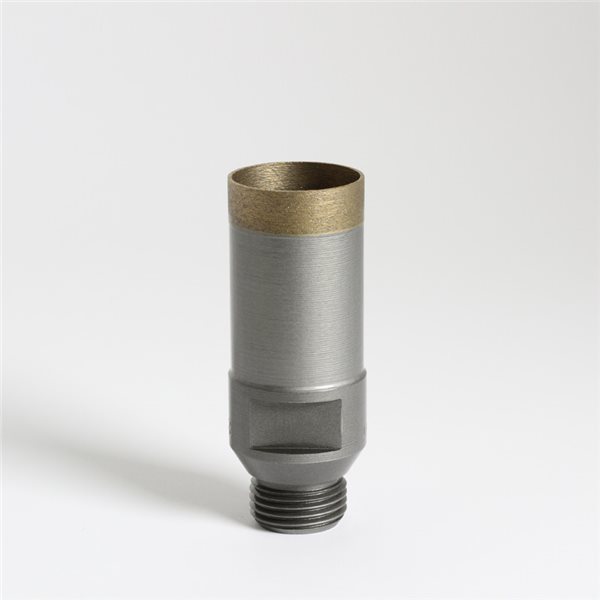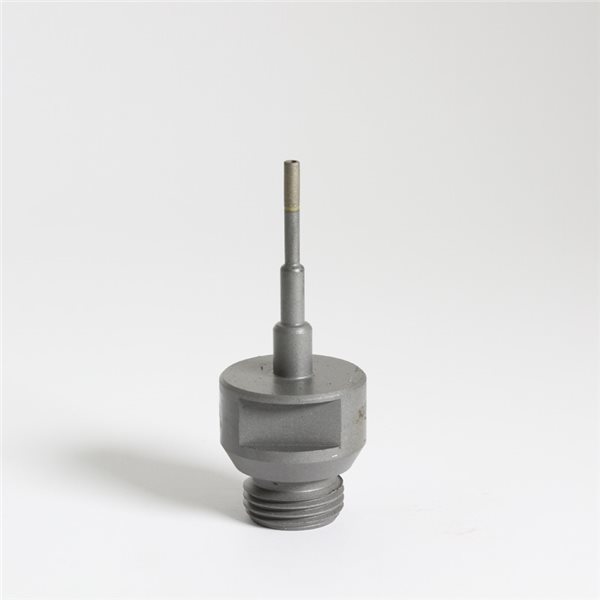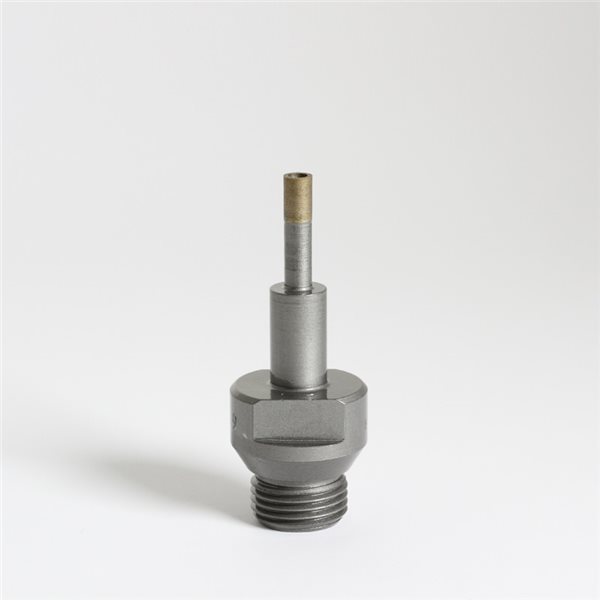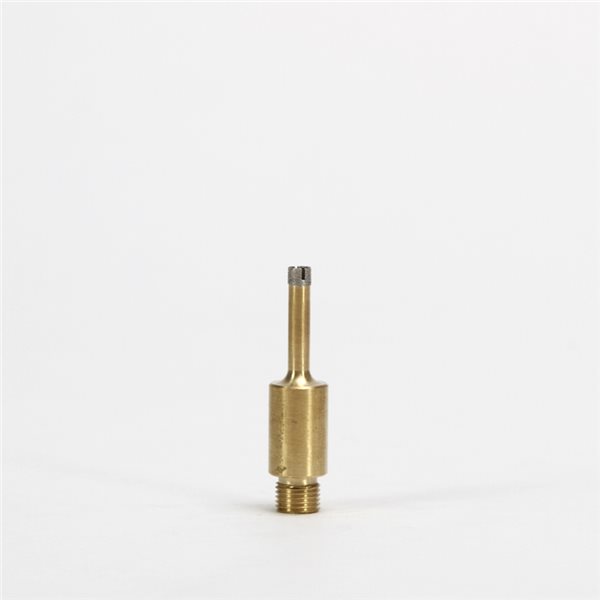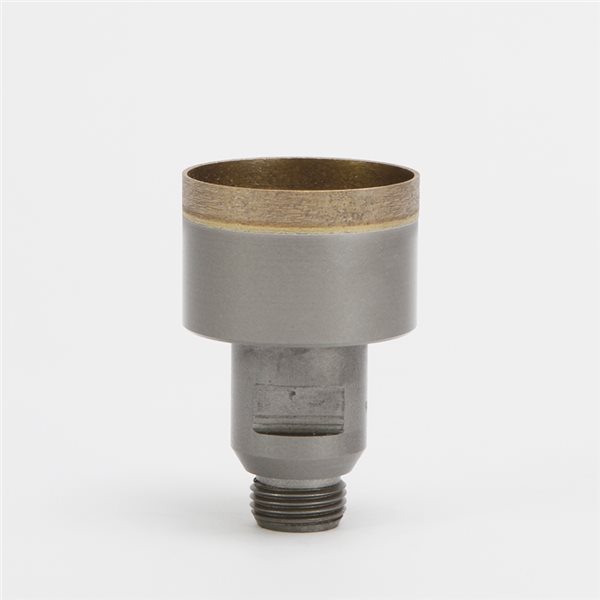Electro-plated drills are a single layer of diamond mixed in a nickel bath deposited onto a substrate for maximum diamond exposure. They are rust-proof.
Advantages:
- Least Expensive
- For small volume cost effective
- A little less sensitive to heat build-up
Varying with application and material, an average electroplated diamond core drill will last you 60 to 100 holes.
Diamonds sit only on the surface. When this diamond portion is peeled off, the diamond drill will slow down, drill on the side or stop working altogether. Electroplated drills cost less, and at first glance may seem like the most cost effective alternative. However depending on your application, they will cost you more in the long run.
Diamond Drilling Glass
To achieve the best results in drilling glass the following points should be taken into consideration:
1. A drill press or stand drill will always give better results and longer drill life than hand held drilling.
2. In an ideal world the peripheral working speed of a diamond core drill for glass would be about 5 metres per second, representing about 9500 revolutions per minute (rpm) for a 10mm drill. As most standard electric drills are made to run at a maximum of 3500 rpm it’s clear from this that we can’t achieve optimal drilling speeds until we are drilling with a 28mm drill.
As most manufacturers today make core drills that will operate sufficiently from 1 metre per second we can run a 6mm drill on a machine running at 3500 rpm. Consequently, every drill size smaller than 6mm isn’t running efficiently in a standard electric drill and requires special care, i.e. plenty of coolant (very cold water preferably with a cooling additive), a drill stand or some means of holding the drill in a steady position and sufficient coolant pressure to ensure that the contact area is kept clear of debris.
3. Most drills from 3mm up are core drills, that is to say a drill with a hole in the centre to allow coolant to flow freely. For drills up to 6-7mm it’s necessary to ensure that the core remains free of debris and this can be achieved either by using a high pressure coolant supply or regularly removing the drill from the work to allow the coolant to flush the work area and clear the core of the drill.
4. Don’t forget that you are essentially grinding glass and not drilling in the traditional sense. Your greatest enemy is heat build-up as this will lead to micro cracks in your work and possibly premature drill tip failure.
5. Never drill constantly. Always lift the drill out of the work at very regular intervals, the smaller the drill diameter the more often.
Tipps
When coupled with 201.722 Adaptor for Glass Drills - 10mm Thread to 1/2 inch Belgian Thread they can be used in professional glass drilling machines. For small-studio use, when used with 201.721 Flushing System - Cooling Head they can be used with a proprietary pillar-drill, in which case there is no need for the adaptor.
2944 0.052000








